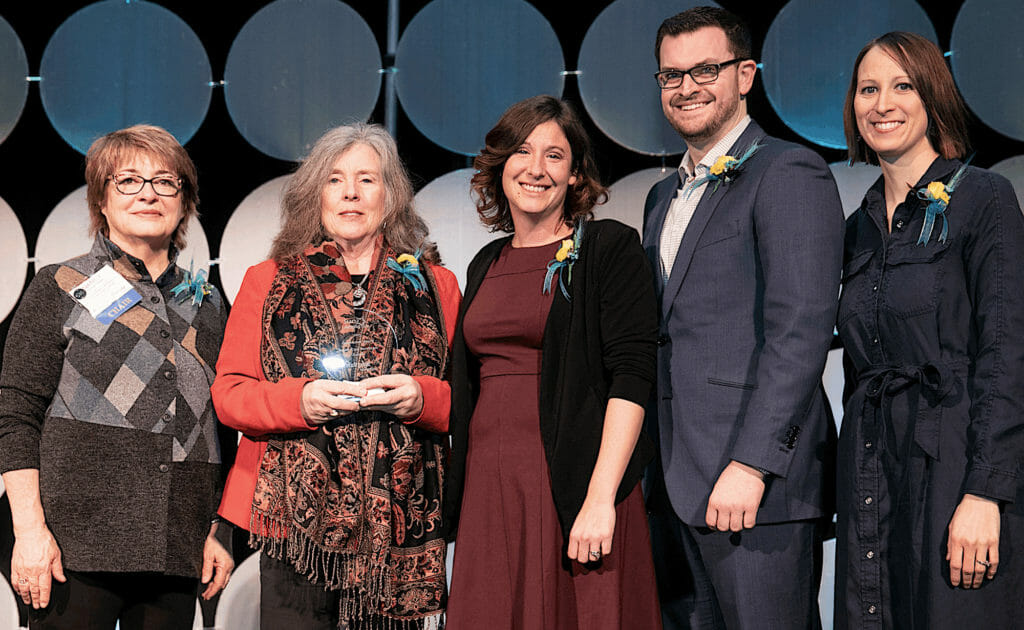
When Shoreview, MN-based Ecumen launched its Ecumen Scholars program in 2015 to expose nursing students to senior living and long-term care through work experiences at Ecumen communities, it soon became apparent that nursing students weren’t the only ones who could benefit from this type of exposure.
Their nursing school faculty members would, too.
Nursing schools were focusing their curricula on acute care, which meant that both pupils and teachers were most familiar with nursing in that setting.
“I’ve also taught as an adjunct faculty member, so I had been in that world and had seen that most of the faculty had acute-care experience,” Ecumen Vice President of Nursing Services Brett Anderson told McKnight’s Senior Living. “What was surprising to us was, throughout the Scholars program, as we interacted with faculty, we found that … they were really open and wanted this kind of [senior care] programming but didn’t really know that someone could provide it.”
Working with nursing educators in the Minnesota colleges and university system, Ecumen nurses subsequently helped design and teach a workshop titled “Senior Care Excellence: Enhancing Your Clinical Toolbox – Best Practices in Geriatric Care for Faculty in Transitional Care/Long Term Care.” Topics in the grant-funded workshops include enhancing clinical skills, improving quality in long-term care and promoting critical thinking. Additionally, participants learn about the difference between dementia and delirium as well as end-of-life, hospice and palliative care.
Workshops were held in August in Mankato, MN, and in November in Duluth, MN, with educators in the first session participating in simulations with standardized patients (actors with additional training) at Minnesota State University, Mankato.
“It provided them with a really rich experience,” Anderson said. “It transported them, as if they were really in someone’s home. But the main goal was to get them that experience … under their belt.”
Education after the simulation time was just as important, he said.
“A key piece of clinical experience in simulation is the debriefing exercises that happen after, and so with MSU Mankato’s help, we were able to also, while we were debriefing, talk about how to debrief, what are some best practices with debriefing, and what are the things you should think about if your experience isn’t in senior care or long-term care that you can bring into this environment so that students can get as much out of it as they can.”
Additional education took place at Ecumen communities.
More workshops are planned for 2019. The program is a key step in exposing more students to the career possibilities in senior living and long-term care to help reduce the shortage of long-term care nurses in rural Minnesota, Ecumen believes.
“How nursing faculty present our industry to students is pivotal,” Anderson said. “We strongly believe that partnering with faculty today will lead to student nurses choosing our industry and helping all providers deliver quality resident care in the future.”
Ecumen was recognized for its Senior Care Excellence program by LeadingAge Minnesota Feb. 6, when it received the organization’s Stars Among Us Innovation Award, which honors programs that “transform and enhance the experience of aging.”
“With a rapidly growing aging population in Minnesota, Ecumen recognized a need to bring a more in-depth perspective of the aging services field into college nursing programs that have focused almost exclusively on acute-care training,” LeadingAge Minnesota President and CEO Gayle Kvenvold said. “The Senior Care Excellence program is shaping the future of aging services by breaking down stereotypes, winning hearts and minds, and improving the quality and accessibility of care for Minnesota’s seniors across the state.”



